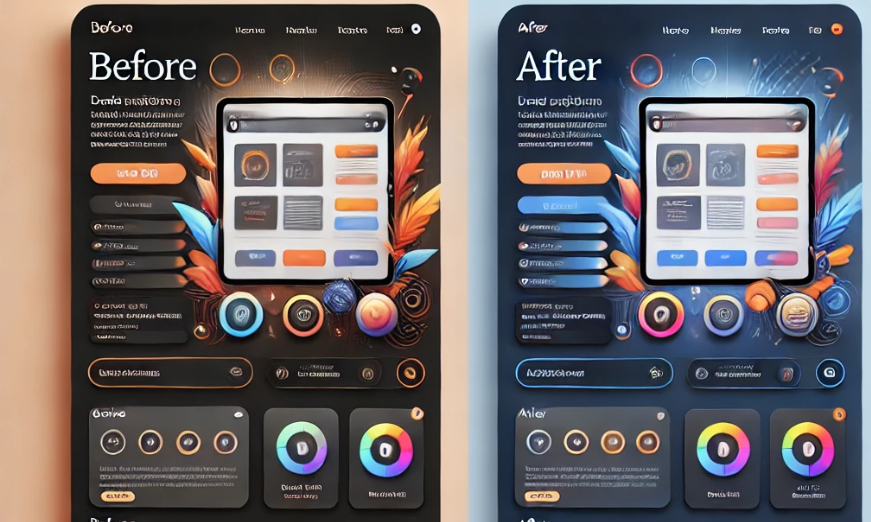In the competitive landscape of product development, a well-executed roadmap can be the difference between market leadership and obsolescence. Product development roadmap achievements are not just milestones on a chart; they represent the tangible outcomes that drive business growth, customer satisfaction, and innovation. This comprehensive guide explores the key elements of successful roadmap execution, providing insights on overcoming challenges, leveraging emerging trends, and ultimately maximizing your product’s potential.
Understanding Product Development Roadmap Achievements
At its core, a product development roadmap is a strategic plan that outlines a product’s journey from concept to market reality. However, the true measure of a roadmap’s success lies in its achievements – the concrete results that align with business objectives and customer needs. These achievements can range from meeting specific performance metrics to successfully launching new features that captivate the market.
Key Metrics of Success
To effectively gauge the success of a product roadmap, organizations must employ a balanced approach that considers both quantitative and qualitative metrics. Here are some essential key performance indicators (KPIs) to track:
- Revenue Growth: Perhaps the most straightforward measure of success, revenue growth indicates the financial impact of your product development efforts.
- Market Share: An increase in market share suggests that your product is outperforming competitors and resonating with customers.
- Customer Satisfaction: Metrics like Net Promoter Score (NPS) or Customer Satisfaction Score (CSAT) provide insights into how well your product meets user expectations.
- User Adoption and Engagement: For digital products, metrics such as daily active users (DAU), monthly active users (MAU), and time spent in-app can indicate product stickiness and value.
- Feature Utilization: Tracking which features are most used can help prioritize future development efforts and identify areas for improvement.
- Time-to-Market: The speed at which new features or products are developed and launched can be a critical competitive advantage.
- Return on Investment (ROI): Measuring the financial returns against the resources invested in product development provides a holistic view of success.
Overcoming Roadblocks to Achievement
The path to product success is rarely smooth. Organizations often face numerous challenges that can derail even the most meticulously planned roadmaps. Here are some common roadblocks and strategies to overcome them:
- Resource Constraints: Challenge: Limited budget, personnel, or technological resources can hinder progress. Solution: Prioritize features based on potential impact and resource requirements. Consider adopting lean development methodologies to maximize efficiency.
- Changing Market Dynamics: Challenge: Rapid shifts in customer preferences or competitive landscape can render plans obsolete. Solution: Build flexibility into your roadmap. Conduct regular market research and be prepared to pivot when necessary.
- Technological Advancements: Challenge: Emerging technologies may disrupt your product strategy. Solution: Stay informed about industry trends. Allocate resources for research and development to explore new technologies proactively.
- Team Collaboration Issues: Challenge: Siloed departments or communication breakdowns can impede progress. Solution: Foster a culture of cross-functional collaboration. Implement tools and processes that facilitate transparent communication and shared goals.
- Scope Creep: Challenge: Constantly adding new features can delay launches and strain resources. Solution: Establish clear criteria for feature prioritization. Use techniques like the MoSCoW method (Must have, Should have, Could have, Won’t have) to manage expectations and focus on essential deliverables.
Best Practices for Achieving Roadmap Goals
Successful roadmap execution requires a combination of strategic planning, effective implementation, and continuous improvement. Here are some best practices to maximize your roadmap achievements:
- Embrace Agile Methodologies: Agile approaches, with their emphasis on flexibility and iterative development, can be instrumental in achieving roadmap goals. By breaking down large projects into smaller, manageable sprints, teams can deliver value more quickly and adapt to changing requirements.
- Align with Business Objectives: Ensure that your product roadmap is closely aligned with overall business goals. This alignment helps prioritize features and initiatives that drive the most significant impact on the organization’s success.
- Foster a Culture of Innovation: Encourage creativity and experimentation within your team. Create spaces for brainstorming and provide resources for exploring new ideas that could enhance your product.
- Implement Continuous Feedback Loops: Regularly gather and analyze feedback from customers, stakeholders, and team members. Use this information to refine your roadmap and make data-driven decisions.
- Prioritize Ruthlessly: Not all features or initiatives are created equal. Use frameworks like the Value vs. Effort matrix to prioritize items that offer the highest return on investment.
- Communicate Clearly and Often: Keep all stakeholders informed about roadmap progress, changes, and achievements. Clear communication helps manage expectations and builds trust.
- Measure and Iterate: Continuously track your KPIs and be prepared to adjust your roadmap based on performance data. Celebrate successes and learn from setbacks to improve future planning.
Leveraging Emerging Trends for Roadmap Success
The product development landscape is constantly evolving, with new technologies and methodologies emerging regularly. Staying ahead of these trends can provide a significant competitive advantage. Here are some key trends to consider incorporating into your roadmap strategy:
- Artificial Intelligence and Machine Learning: AI and ML can enhance various aspects of product development, from predictive analytics for market trends to personalized user experiences. Consider how these technologies can be integrated into your product to create unique value propositions.
- Product-Led Growth: This strategy focuses on using the product itself as the primary driver of customer acquisition, retention, and expansion. Build features that naturally encourage user engagement and viral growth.
- Customer Journey Mapping: By thoroughly understanding and mapping the customer journey, you can identify pain points and opportunities for product improvement that align closely with user needs.
- OKRs (Objectives and Key Results): This goal-setting framework can help align your roadmap with specific, measurable outcomes, ensuring that every feature or initiative contributes to overarching business objectives.
- Low-Code/No-Code Development: These platforms can accelerate development cycles and empower non-technical team members to contribute to product innovation.
- Sustainability and Ethical Design: Increasingly, consumers are valuing products that prioritize environmental sustainability and ethical considerations. Incorporating these principles into your roadmap can enhance brand reputation and appeal to conscious consumers.
Case Studies: Roadmap Achievements in Action
To illustrate the practical application of these principles, let’s examine two case studies of successful roadmap implementations:
Case Study 1: Agile Pivot to Market Success
A tech startup in the productivity software space initially planned to launch a comprehensive suite of tools. However, after conducting user research and analyzing market trends, they realized that a more focused approach would be more effective. Using agile methodologies, they pivoted their roadmap to prioritize a single, highly polished feature that addressed a specific pain point for their target audience.
By concentrating their resources and iterating rapidly based on user feedback, they were able to launch a minimum viable product (MVP) in half the originally planned time. This focused approach allowed them to capture market share quickly and establish a strong user base. Subsequent features were then developed and released based on user demand and strategic growth opportunities, leading to a 200% year-over-year growth in their first two years.
Case Study 2: AI-Driven Personalization Boosts Customer Satisfaction
A well-established e-commerce company was struggling with plateauing customer satisfaction scores despite a robust product offering. They decided to revamp their roadmap to focus on personalization using AI and machine learning technologies.
By implementing AI-driven recommendation engines and personalized user interfaces, they were able to create tailored shopping experiences for each customer. This initiative required significant investment in data infrastructure and algorithm development, but the results were impressive. Within six months of launch, they saw a 30% increase in customer satisfaction scores, a 25% boost in average order value, and a 15% improvement in customer retention rates.
The success of this AI-driven approach has since become a cornerstone of their ongoing product strategy, with continuous refinement and expansion of personalization features across their platform.
Conclusion: Charting the Course for Continuous Achievement
Achieving product development roadmap goals is an ongoing process that requires strategic planning, effective execution, and a customer-centric mindset. By focusing on key metrics, overcoming common roadblocks, and embracing emerging trends, organizations can create products that not only meet but exceed customer expectations and drive business growth.
Remember that a product roadmap is a living document that should be continuously evaluated and refined. Stay agile, remain open to new ideas, and always keep your users at the heart of your decision-making process. With these principles in mind, your product roadmap can become a powerful tool for achieving sustained success in the competitive world of product development.
As you embark on your product development journey, consider partnering with top pitch deck firms to effectively communicate your roadmap and vision to stakeholders and potential investors. Their expertise can help translate your strategic plans into compelling narratives that drive support and enthusiasm for your product’s future.









